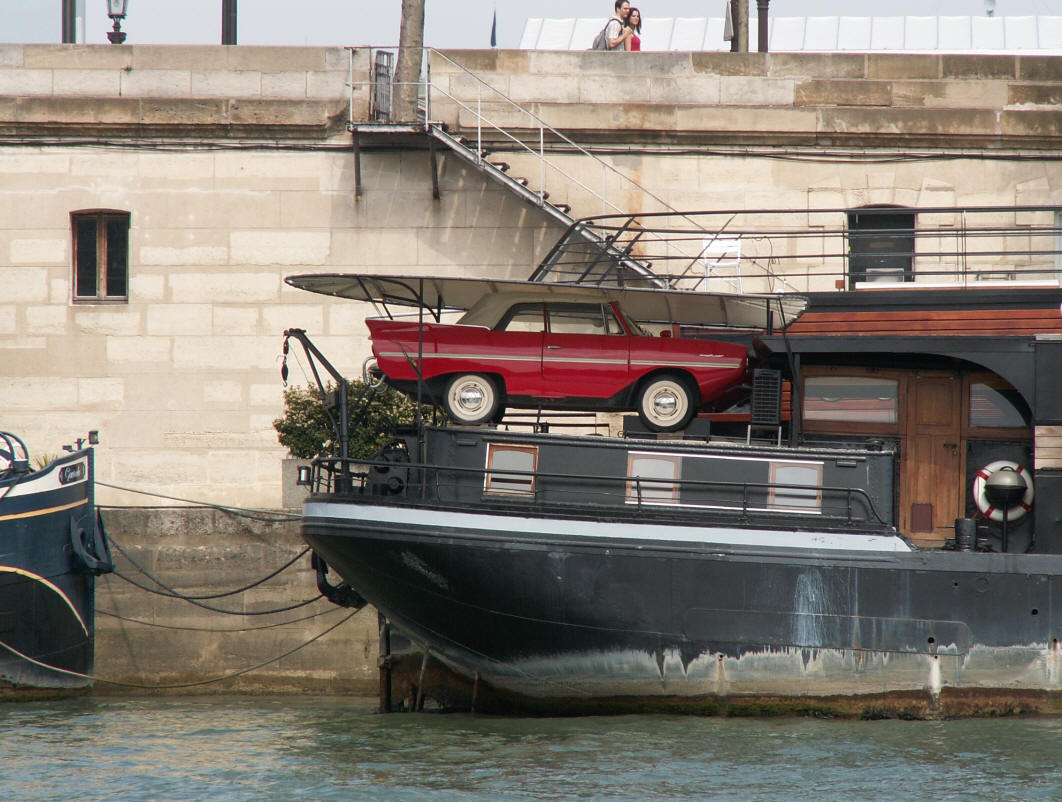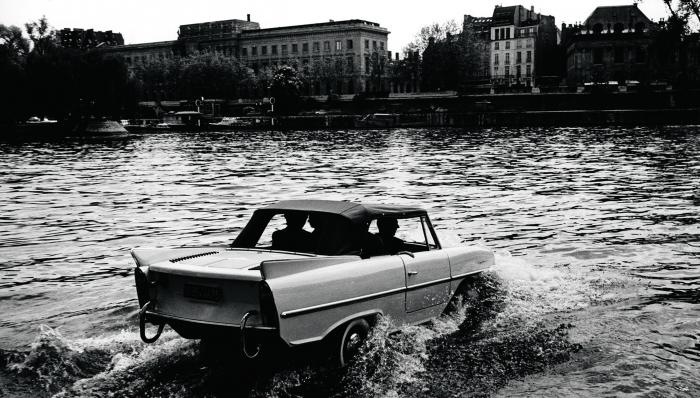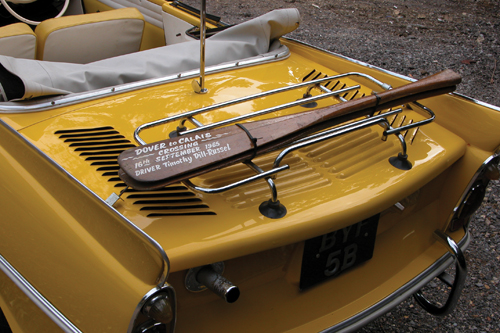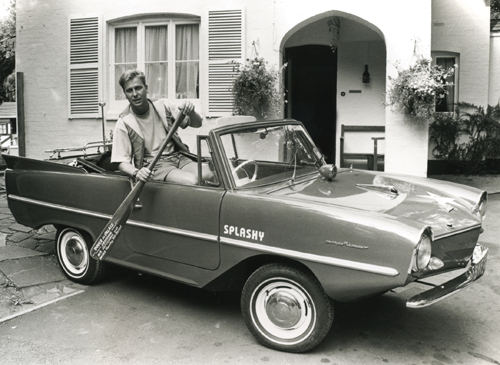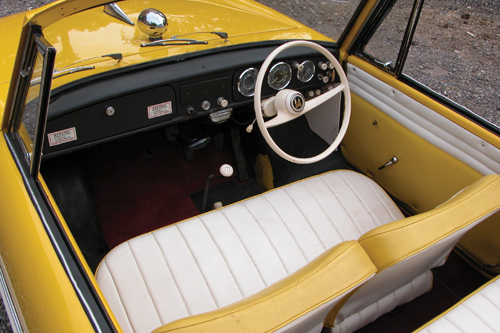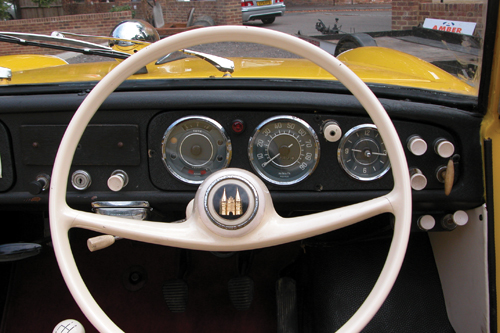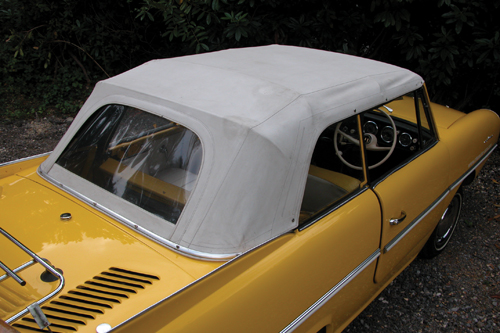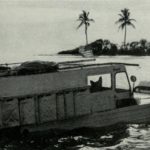The shiny red vintage car that sits proudly on the back of a houseboat in Paris, is a sight well known to Parisians that take time out from the bustling boulevards to walk along the banks of the river Seine. It’s a bit of an urban oddity that no one really knows the story behind. Everytime I see it, I get this nagging feeling like I’ve encountered the car somewhere before, perhaps digging in one of my researching rabbit holes. And then finally, one day it clicked. Of course– this was the same car captured by LIFE magazine photographer Alfred Eisenstaedt crossing the river Seine in 1963. It’s the Amphicar!
A little further digging (why has it taken me so long?) and a website dedicated to Amphicars had the scoop from a Paris resident who is friends with the owner:
The amphicar in Paris is owned by Undersea Architect and visionary Jacques Rougerie. It’s a 1964 and he has had it for about 15 years … restored in France. Jacques and I have cruised the Champs-Elysees many times in it, but I’ve yet to take it in the Seine…The boat that it sits on is a Peniche, or French river barge that has been converted to his home and office. Inside, he has an aquarium full of lake sturgeon which you can actually dive into and hang out in a bell. The rest of Jaques’ daily life is equally as interesting.
I wonder if this is the exact same car in Eisenstaedt’s photograph? Amphicars are known to be prone to rust, but a modern paint job and some wax would have fixed that.
Let’s find out more about the Amphicars…
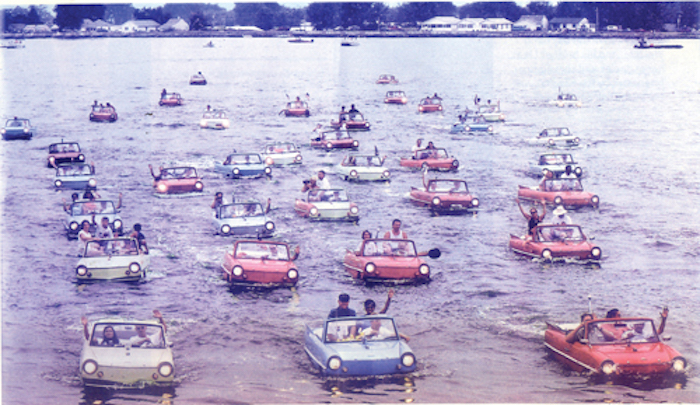
They were manufactured in Berlin from 1962 to 1967 and around 4500 were produced, of which at least 3700 models were sent to the US. Up to 500 amphicars are still in regular use today; almost 90 cars still in Europe.
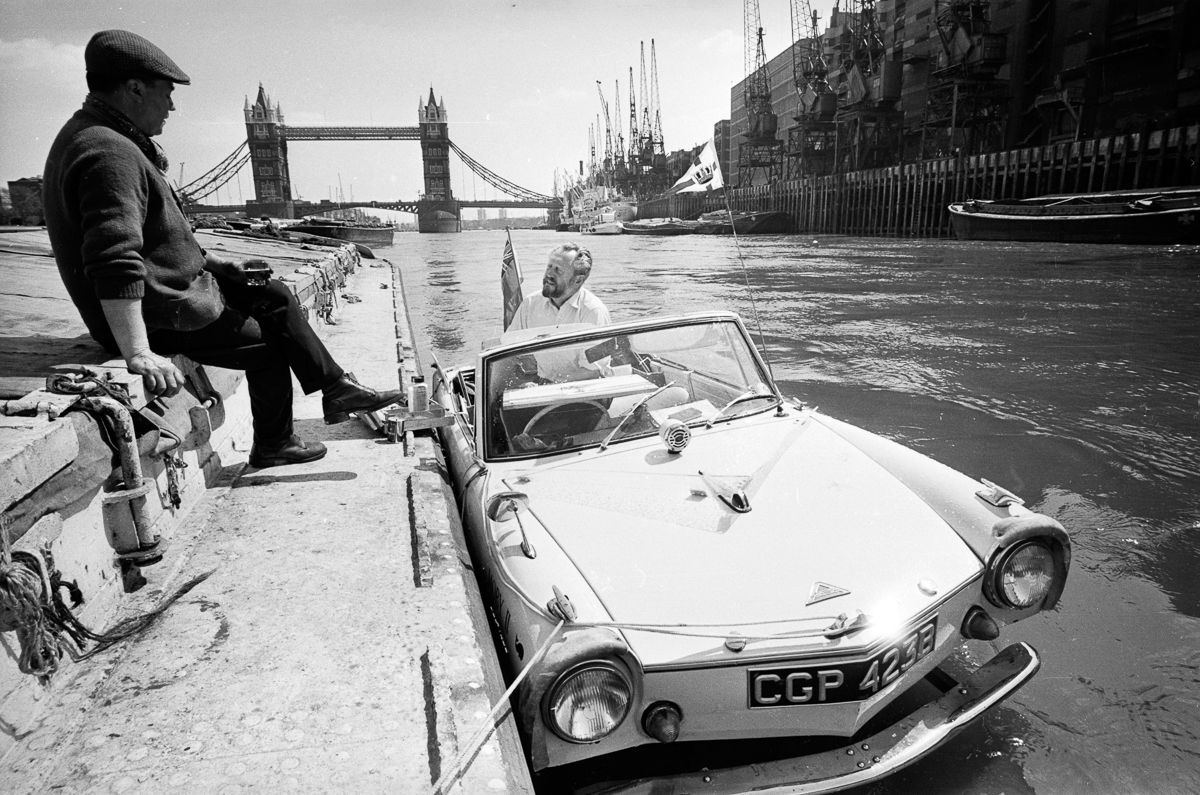
© Getty via Retronaut
Amphicar was and still is the only non-military amphibious vehicle ever put into production on a commercial basis. The many rules and regulations for road and amphibious vehicles make it very unlikely that another one will ever be produced commercially.
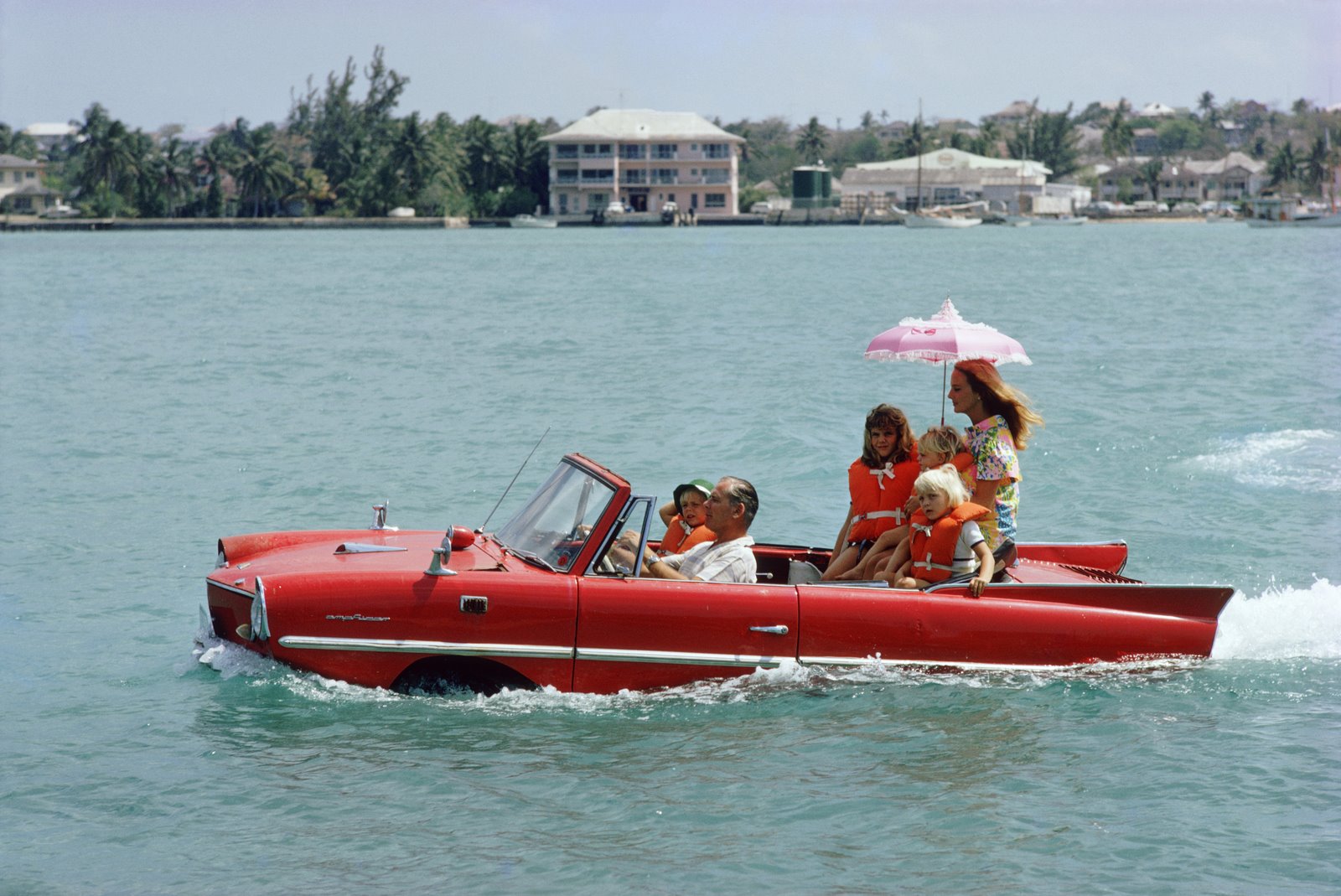
© Sim Aarons
Amphicar is capable of over 70mph on road and 8 knots on water. It’s comfortable enough to drive 500 miles a day and road behavior is similar to a good 1960s European saloon car or a 1980s American car.
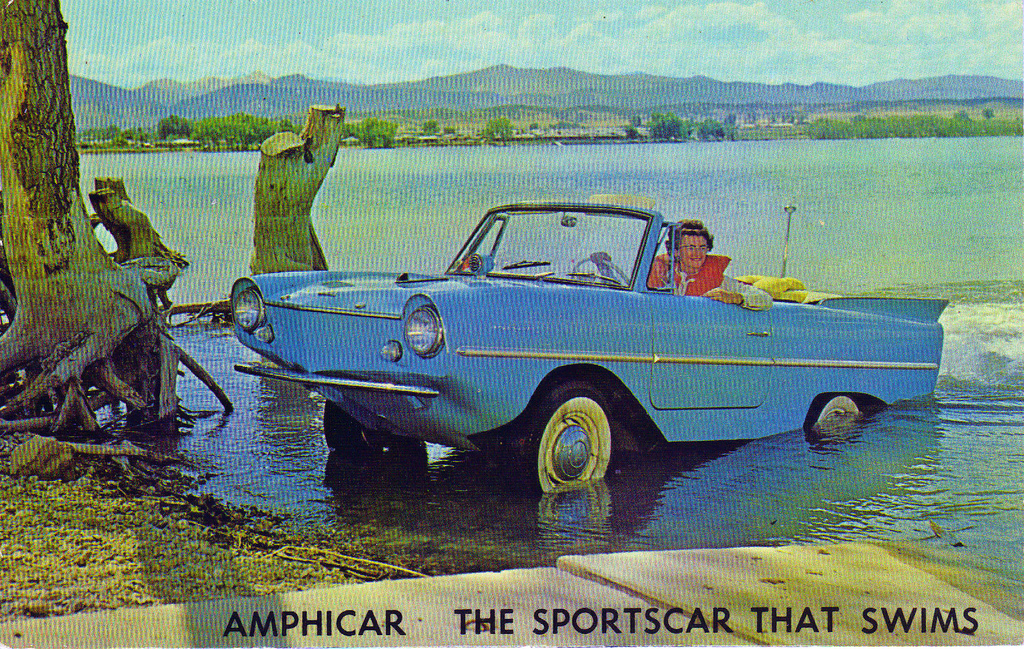
It cost around $5m to design in the late 1950’s and is totally watertight. Two rubber strips seal the doors like the seal on a refrigerator. The engine is in the rear, it is the same as used in the Triumph Herald, 1147cc, 43HP and the transmission drives the rear wheels through a unique land/water gearbox. It steers in water using the front wheels.
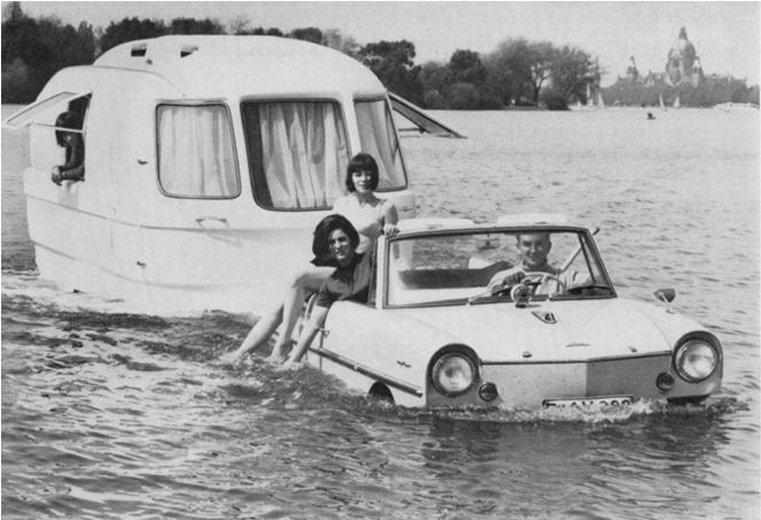
Amphicar unfortunately failed and the company later went belly up because it was too expensive when first-hand and the marketing was all wrong. Amphicar didn’t even employ marketing staff, only engineers. However, it is capable of some serious sea crossings, for example from Africa to Spain, San Diego to Catalina Island and England to France (3 times, once in a force 6 gale).
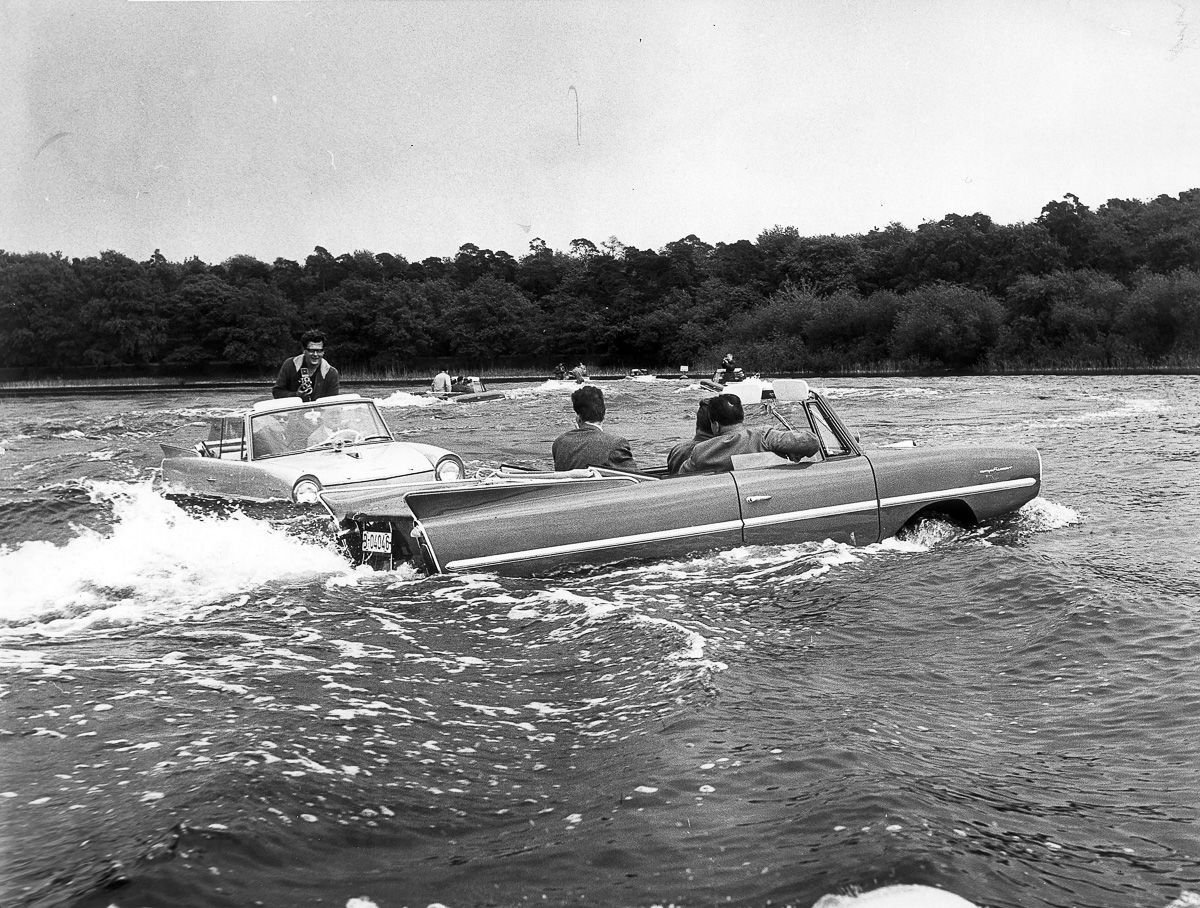
© Getty via Retronaut
The last two companies to attempt production of amphibious vehicles were Hobbycar of France and AmphiRanger of Germany. The production always was small scale / build to order but the factories finally closed in 1996.
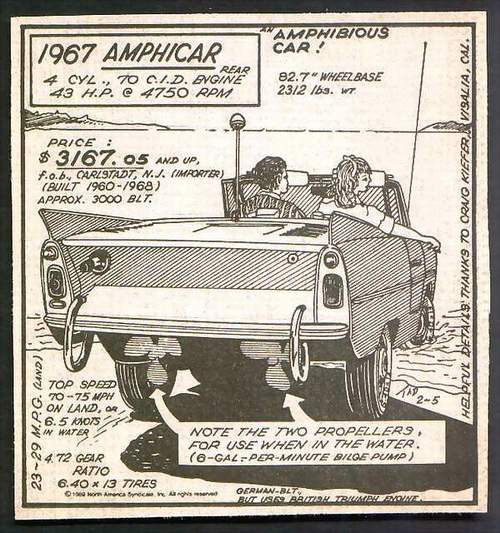
When they go on the market, these vehicles can fetch up to $100K today. Ofcourse, you would need two licences, one for land and one for water.
Here is a stunning example of an Amphicar that sold recently…
If you think you might be in the market for an Amphicar, Roy at Potomac Motors in The Netherlands is a good place to start. For updates of Amphicars for sale and what you need to know before you buy, take a look here
Currently For Sale:
(I’ll try to keep this updated)
1964 Amphicar 770 for €62,500:
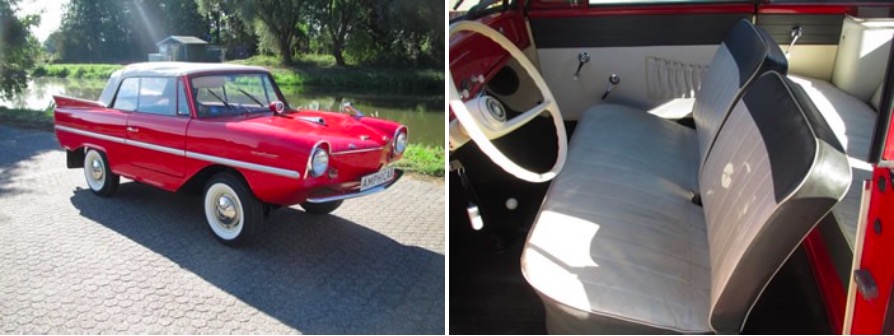
If that’s a little out of your budget, there’s a lovely weathered fixed-upper 1965 model going for €22,000:
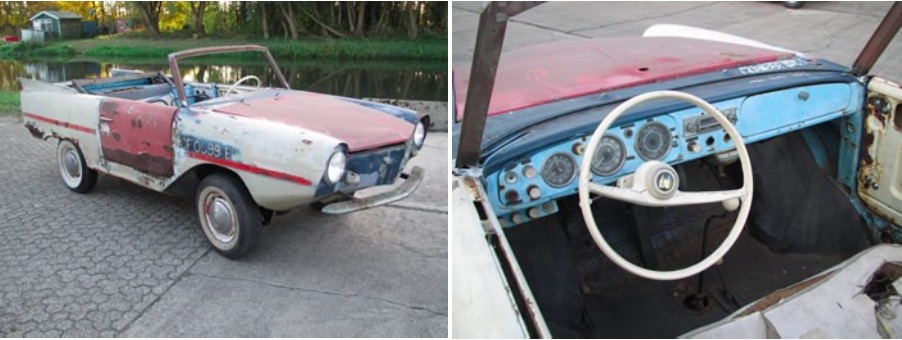
This off-white restored beauty is “price upon request”. Bottom line, expect to pay upwards of 40,000 euros for a safe, reliable and sorted Amphicar.
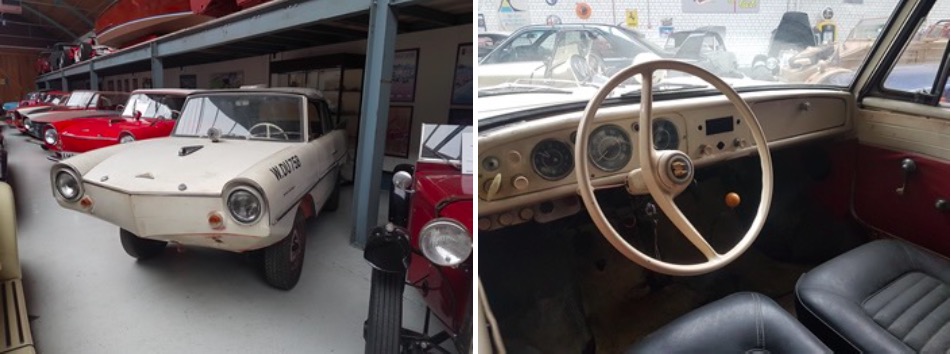
They’re all for sale over at Potomac Motors.
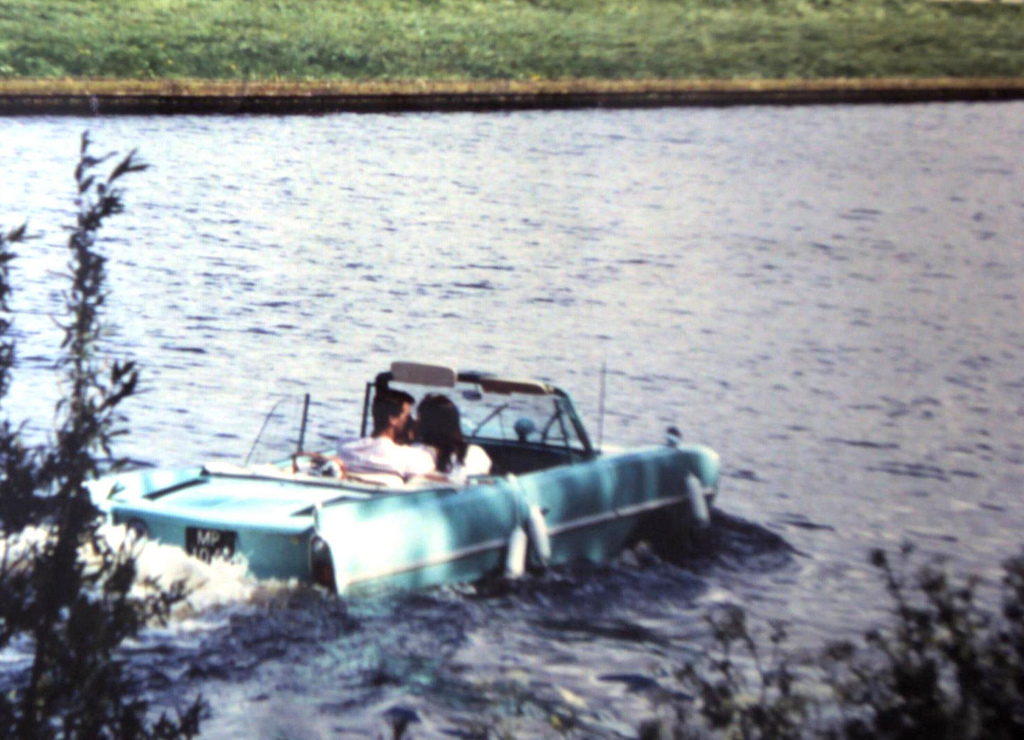
So who’s up for riding off into the sun set in an amphicar?!
Before you go, I’ll leave you with a little amphibious mystery to solve of your own…
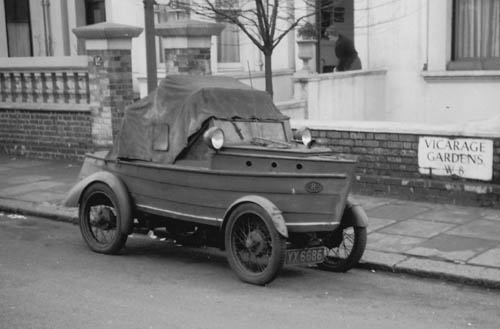
Can anyone tell me more about this little amphibious car? It might be a predecessor to the one we’ve been looking at today. It was photographed in Kensington, London in 1956 and the photo is simply captioned “Austin Amphicar A“, but I’m having trouble finding records of the Austin Motor Company every producing an amphibious car or prototype. Over to you…


